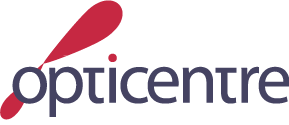Content and Asset Management
Content and Asset Management, Content Management System; is a computer software system for organizing and facilitating collaborative creation of documents and other content
A Content Management System (CMS) is a computer software system for organizing and facilitating collaborative creation of documents and other content. A content management system is frequently a web application used for managing websites and web content, though in many cases, content management systems require special client software for editing and constructing articles. The market for content management systems remains fragmented, with many open-source and proprietary solutions available.
Read more
The value of a company's web site is directly related to the accuracy and speed with which its content can be made available.
As corporate web sites have developed from passive shop windows, containing static information, into interactive portals providing access to personalized business processes for individual users within the business community, the complexity of their structures and the task of maintaining their content have increased dramatically. Content Management Systems, such as Immediacy, facilitate this activity, deliver business benefit in terms of efficiency, control and increased content value.
Content creation and updating
A Content Management System ensures that a company's web site is focused on the achievement of business objectives, rather than being driven by technical issues, by putting control of content into the hands of its business experts.
Consistent corporate branding
A coherent web site design philosophy, consistently implemented, is essential to successful Web communication. All too often, the ad hoc development and manual editing associated with the traditional static web site resulted in confused site appearance and navigation. This led to inconsistent branding and diluted corporate identity, and required considerable effort to police and control.
Streamlined centralized management
A Content Management System that uses template based publishing and a dynamic content repository centralizes control to deliver numerous benefits and efficiencies.
Protecting content value
A Content Management System protects the value of content by accelerating and automating publication processes, putting control of content into the hands of the business experts and providing centralized administration of its presentation.
Adding new features
To build lasting value from their corporate web sites, companies need to be able to respond to the more sophisticated demands from users with enhanced features to extend the capabilities offered. A Content Management System makes this possible by providing a number of capabilities that the traditionally managed web sites cannot deliver.
Read more
There are serveral types of content management systems which include:
- Web content management systems assist in automating various aspects of web publishing.
- Transactional content management systems (T-CMS) assist in managing e-commerce transactions.
- Integrated content management systems (I-CMS) assist in managing enterprise documents and content.
- Publications management systems (P-CMS) assist in managing the publications (manuals, books, help, guidelines, references) content life cycle.
- Learning management systems (L-CMS) assist in managing the web-based learning content life cycle. See also managed learning environment.
- Document imaging systems are also generally considered under the family of general content management.
- Enterprise content management systems (E-CMS) vary in their functionality. Some support both the web and publications content life cycle, while others support the web content life cycle and either transactional content or customer relationship management content. The definition of AIIM for ECM includes methods and tools for "capture, manage, store, preserve and deliver" content across an enterprise. "Manage" contains components like document management, collaboration, business process management, records management, email management, workflow and web content management. The ECM concept is not restricted to web based technologies but includes client/server and hosted/On-demand solutions.
Read more
Running a content organization is like directing an orchestra: writers, editors, designers and so on. To meet deadlines and and get the job done, everyone has to be aligned and synchronised.
Everything to keep the content creation flowing, so you can focus on what matters the most: creating content your readers will love.
- Reduce Compliance Risk
- Increase knowledge worker productivity
- Support efficiency with collaboration
- Deliver accountability and compliance
Read more
Globalization Management System (GMS) is enterprise software applications that provide the infrastructure to control the complex process of adapting, translating and maintaining all of a company's content and information (such as corporate documents, databases, enterprise applications, Web sites, manuals, and more) worldwide. A GMS should meet the challenge of developing, leveraging, and maintaining a multilingual, multinational and multicultural base of enterprise information.
Read more
It is data about data. Meta data describes how and when and by whom a particular set of data was collected, and how the data is formatted. Meta data is essential for understanding information stored in data warehouses.
Read more
 English
English


 Bulgarian
Bulgarian